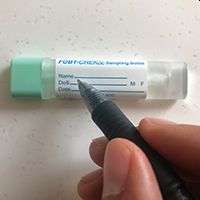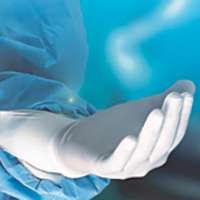Tests and Preps - GI Patients May Need
Find your care
The UCLA digestive diseases team cares for routine and complex gastrointestinal problems. To learn more about our services, call 310-825-2631.
General GI

Colonoscopy: Bowel prep medication options
One bowel prep medication type may not be right for everyone, and you should always use the bowel prep medication that your doctor has directed you to use. We offer CLENPIQ®, GoLYTELY®, MiraLAX®, MoviPrep®, PLENVU®, SUPREP® and SUTAB®.
Download prep instructions in English or en Español

Fecal immunochemical test (FIT) instructions: Stool screening test for colorectal cancer
If you received your fecal immunochemical test (FIT) kit from UCLA Health, you likely received the Polymedco OC-Auto FIT kit.
Download FIT kit instructions in English or en Español

Sigmoidoscopy (Flex Sig)
A sigmoidoscopy (flex sig) is a diagnostic test to check the lower part of your colon or large intestine (the sigmoid colon).
Flexible sigmoidoscopy preparation instructions
Capsule endoscopy (PillCam™)
Capsule endoscopy uses a small camera that fits inside a capsule that is about the size of a large pill. The camera takes pictures of the small intestine which is normally beyond the reach of an endoscopy.
Capsule endoscopy test preparation instructions
Upper GI endoscopy (EGD)
An upper GI endoscopy is a procedure to diagnose and treat problems in your upper GI tract. The alternative name for EGD is esophagogastroduodenoscopy. Download prep instructions in English or en Español.

GI Motility
GI motility disorders disrupt the transport of ingested materials along the digestive tracts. Our team uses all of the latest modalities to properly diagnose each patient and guide treatment. These modalities include high-resolution anorectal manometry, high-resolution esophageal manometry, esophageal impedance pH testing, wireless esophageal pH testing, wireless motility capsule, and sugar tolerance testing.
Imaging
- Abdominal ultrasound is an imaging procedure used to examine the internal organs of the abdomen, including the liver, gallbladder, spleen, pancreas, and kidneys. The blood vessels that lead to some of these organs can also be looked at with ultrasound.
- Alternative names: Ultrasound - abdomen; abdominal sonogram
- More information on an abdominal ultrasound
- Barium enema is a special x-ray of the large intestine, which includes the colon and rectum.
- Alternative names: Lower gastrointestinal series; lower GI series
- More information on a barium enema
- Magnetic resonance imaging (MRI) is a noninvasive way to take pictures of the body. Unlike x-rays and computed tomographic (CT) scans, which use radiation, MRI uses powerful magnets and radio waves. The MRI scanner contains the magnet. The magnetic field produced by an MRI is about 10 thousand times greater than the earth's. The magnetic field forces hydrogen atoms in the body to line up in a certain way (similar to how the needle on a compass moves when you hold it near a magnet). When radio waves are sent toward the lined-up hydrogen atoms, they bounce back, and a computer records the signal. Different types of tissues send back different signals.
- Alternative names: Magnetic resonance imaging; nuclear magnetic resonance (NMR) imaging
- Pelvic CT scan is a computed tomography (CT) scan of the pelvis is an imaging method that uses x-rays to create cross-sectional pictures of the organs inside the pelvis (liver, kidneys, gallbladder, pancreas, and bladder, prostate, lymph nodes, and pelvic bones).
- Alternative names: CAT scan - pelvis; computed axial tomography scan - pelvis; computed tomography scan - pelvis
- An upper GI and small bowel series is a set of x-rays taken to examine the esophagus, stomach, and small intestine. Also see barium enema.
- Alternative names: GI series; barium swallow x-ray; upper GI series
- More information on upper GI and small bowel series